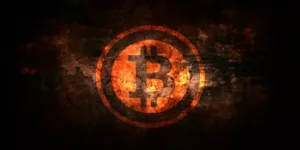The buzz around Bitcoin has been going on for quite a while now and a lot of other cryptocurrencies have been popping up in its wake. Some currencies have established themselves and other, so-called, tokens were just hot air and disappeared.
What is Bitcoin
Bitcoin’s origin and even nature might sound a little dubious; an anonymous group or person develops a decentralized digital currency that floats around the internet, with no one controlling it. But there is a lot of solid science behind the whole concept. Putting the complicated technology behind Bitcoin aside, it was developed to make moving money around easier.
The world is divided on whether Bitcoin is some kind of diabolic scam or a medium that could revolutionize the way we store, spend and move assets. Some people compare Bitcoins to the Tulip Mania (Bubble), which is, in my view, quite ridiculous. At that time people started buying tulip bulbs speculating that they would sell well, they were speculating with flowers! Bitcoins are not a product, just like the US Dollar or Chinese Yuan are not products. We are talking about money, a currency, so the real question is if Bitcoin is apt as a digital currency.
Fiat currencies and fractional reserve
According to Wikipedia
Money is any item or verifiable record that is generally accepted as payment for goods and services…
There is no real description of what qualifies as a means of payment, it just has to be accepted as a payment, even an I.O.U written on a napkin is a kind of currency. A lot of people are under the wrong impression that fiat currencies are backed by some kind of tangible value. That used to be true, the dollar was backed by gold and other currencies were backed by the dollar, or at least could be traded in for dollars. But in 1971 President Nixon took the dollar off the gold standard. Since then the US dollar is backed by the “full faith and credit” of the U.S. Government.
One advantage Bitcoin has over other currencies is that there is a limited amount (like gold), you can’t just make it out of thin air (like gold) and you can’t make it disappear.
Banks can make money out of thin air. One common way is the fractional reserve system, a bank only needs to actually own a fraction of the money it lends out (usually 10%) the rest is made by magic money making elves sitting in the bank’s computer system. This is only possible because the money we have on our accounts, or in our hands is not backed by anything. It can be produced and destroyed with a click of the mouse. Banks are not even legally obliged to pay you back all of your deposits.
Money has as much value as you are willing to give it.
The $30,000,000 pizza
The very first purchase made with a cryptocurrency was two pizzas for 10,000 bitcoins. If you took today’s course, that would be around 30 million dollars for a pizza. Before this purchase, a bitcoin had zero value but after that, a bitcoin had value, it was worth a very tiny fraction of a cent.
The willingness of someone to accept Bitcoin as a payment method automatically turned it into a currency. Nobody needed the blessing of a central bank, the moment they exchanged some bits and bytes for a pizza a currency was born.
Bitcoin is here to stay
There are lots of people who argue that Bitcoin will be worthless soon, it will crash, it is a bubble etc. BS. Bitcoin cannot be worth zero as long as there is even one person willing to exchange it for a product or service. Bitcoin is not a stock that promises ROI, to crash or burst. The demand and supply determine its value, like any other currency.
Bitcoin is a disruptive technology that has the potential of changing financial systems as we know them today. The problem most people have is that it can not really be controlled by anyone. If you pay attention, you’ll see that most of the people demonizing Bitcoin are the ones who are controlling the money now.








